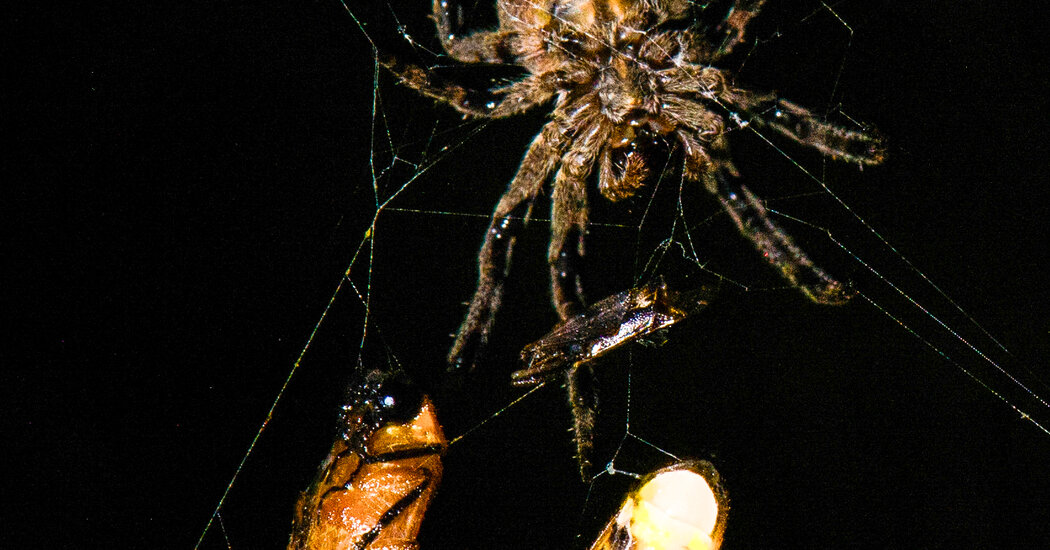Imagine being a male firefly when suddenly the telltale flashing of a female catches your eye. Enthralled, you speed toward love’s embrace — only to fly headfirst into a spider’s web. That flashy female was in fact another male firefly, himself trapped in the web, and the spider may have manipulated his light beacon to lure you in.
This high-stakes drama plays out nightly in the Jiangxia District of Wuhan, China. There, researchers have found that male fireflies caught in the webs of the orb-weaver spider Araneus ventricosus flash their light signals more like females do, which leads other males to get snagged in the same web. And weirdly, the spiders might be making them do this, almost like hunters blowing a duck call to attract prey.
“The idea that a spider can manipulate the signaling of a prey species is very intriguing,” said Dinesh Rao, a spider biologist at the University of Veracruz in Mexico. “They show clearly that a trapped firefly in the web attracts more fireflies.” Dr. Rao was not involved in the research, but served as a peer reviewer of the paper published Monday in the journal Current Biology.
Xinhua Fu, a zoologist at Huazhong Agricultural University in Wuhan, was in the field surveying firefly diversity when he first noticed that male fireflies seemed to end up ensnared in orb-weaver spider webs more often than females. Wondering if the spiders were somehow specifically attracting males, he teamed up with Daiqin Li and Shichang Zhang, animal behavior experts from nearby Hubei University, to get to the bottom of this sticky mystery.
Working near paddy fields and ponds, the researchers observed the flashing of trapped male fireflies and saw that it more closely resembled that of females than of free-flying males. Trapped males flashed using only one of their two bioluminescent lantern organs, and they made one flash at a time rather than multiple flashes in quick succession, the same lighting signals females send when trying to attract males.
To see if this altered flashing could be luring more males to their doom, the team identified a whopping 161 webs with a trapped male firefly and randomly assigned one of four conditions to them: Either they removed the spider, blackened out the firefly’s lanterns with ink, did both or did neither. They then diligently monitored each web every five to 10 minutes and recorded how many new males were caught.
